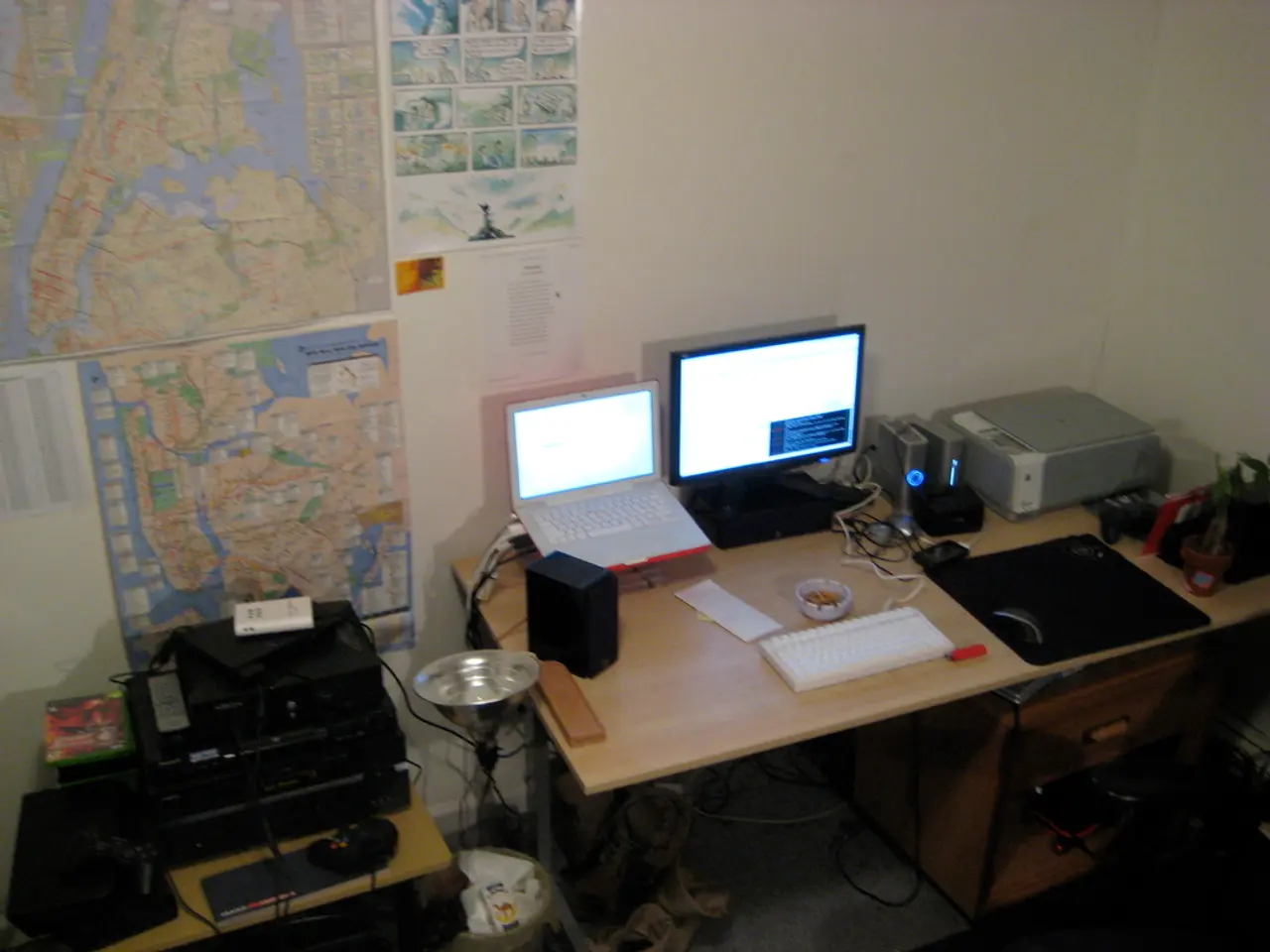High-density Memory Market Anticipated to Reach Multiple Billions in Value by 2030, AI Memory Sector Predicted for 30% Yearly Growth over Five Years (according to SK hynix)
High Bandwidth Memory (HBM) Market for AI: SK Hynix Leads the Pack in Growing Market
The High Bandwidth Memory (HBM) market for artificial intelligence is poised for significant growth, with projections of a compound annual growth rate (CAGR) of approximately 30% from 2025 to 2030, reaching a market size of nearly $98 billion by 2030 [1]. This expansion is fueled by the surging demand for AI infrastructure, driven by the need for faster data processing, higher bandwidth, power efficiency, and architectural innovations [3].
Key market dynamics include the increasing complexity of AI models, which necessitate memory modules with higher capacity (often over 8 GB per stack) and enhanced bandwidth to minimize latency and maximize throughput [3]. HBM also boasts superior profitability compared to traditional DRAM, with operating margins around 42% versus 15–20%, reflecting its inelastic demand in AI infrastructure [1].
The rise of edge AI applications is also fostering demand for cost-efficient HBM variants suitable for embedded and mobile AI systems [3].
In the HBM AI market, three major players stand out: SK Hynix, Samsung, and Micron Technology.
SK Hynix dominates approximately 70% of the global HBM market and powers NVIDIA’s Blackwell Ultra AI chips. The company has proprietary MR-MUF technology, plans to invest $200 billion in capital expenditure, and is driving the forecasted 30% CAGR and $98B market size by 2030 [1][3].
Samsung, alongside SK Hynix, accounts for over 90% of HBM supply and is heavily invested in advanced packaging and power-efficient HBM solutions for AI chips [3].
Micron Technology, the first U.S. company to mass-produce HBM3E, has a significant presence in high-end AI computing memory, with its HBM products used in NVIDIA’s H200 GPUs [3].
Leading hyperscale cloud providers, such as Amazon, Microsoft, and Google, are heavily investing in AI infrastructure and next-gen GPUs that rely on HBM memory. While not direct HBM suppliers, their large-scale deployments drive demand for HBM-enhanced GPUs by companies like NVIDIA and indirectly shape market growth [1][4][5].
The GPU server market, which heavily incorporates HBM for AI workloads, is projected to grow at an even faster rate of 33.6% CAGR, reaching $730.56 billion by 2030, underscoring the escalating demand for HBM-enabled computing [5]. Data center GPUs, central to AI computing, are rapidly expanding with annual growth of around 21.5%, and NVIDIA’s data center revenue soared 73% year-over-year, reflecting the core role of GPU+HBM architectures in AI infrastructure [4].
In summary, the HBM market for AI is experiencing explosive growth, with SK Hynix and Samsung as dominant suppliers, Micron emerging as a significant U.S. player, and cloud giants Amazon, Microsoft, and Google accelerating demand through massive AI infrastructure investments. This structural shift is driven by AI model complexity and the essential role of HBM in supporting high-throughput, power-efficient AI workloads.
Demand for HBM chips is "firm and strong," with capital spending by hyperscalers such as Amazon, Microsoft, and Google expected to increase over time. The market for custom HBM alone could be worth tens of billions of dollars by 2030. Market estimates put the total HBM opportunity near $98 billion by 2030. SK Hynix's current lead in customization and packaging leaves it well-positioned if AI demand continues its upward march.
For up-to-date news, analysis, and reviews on HBM and other semiconductor developments, readers can follow Tom's Hardware on Google News.
References:
[1] Tom's Hardware
[2] AnandTech
[3] Semiconductor Engineering
[4] Seeking Alpha
[5] MarketsandMarkets
The surge in demand for AI infrastructure, necessitating faster data processing and higher bandwidth, is driving the growth of the High Bandwidth Memory (HBM) market for AI. This expansion is projected to reach a market size of nearly $98 billion by 2030, with SK Hynix, Samsung, and Micron Technology being the major players in this market.
Moreover, the increasing complexity of AI models and the rise of edge AI applications are further boosting the demand for cost-efficient HBM variants in the AI industry, particularly in finance, data-and-cloud-computing, and technology sectors.




